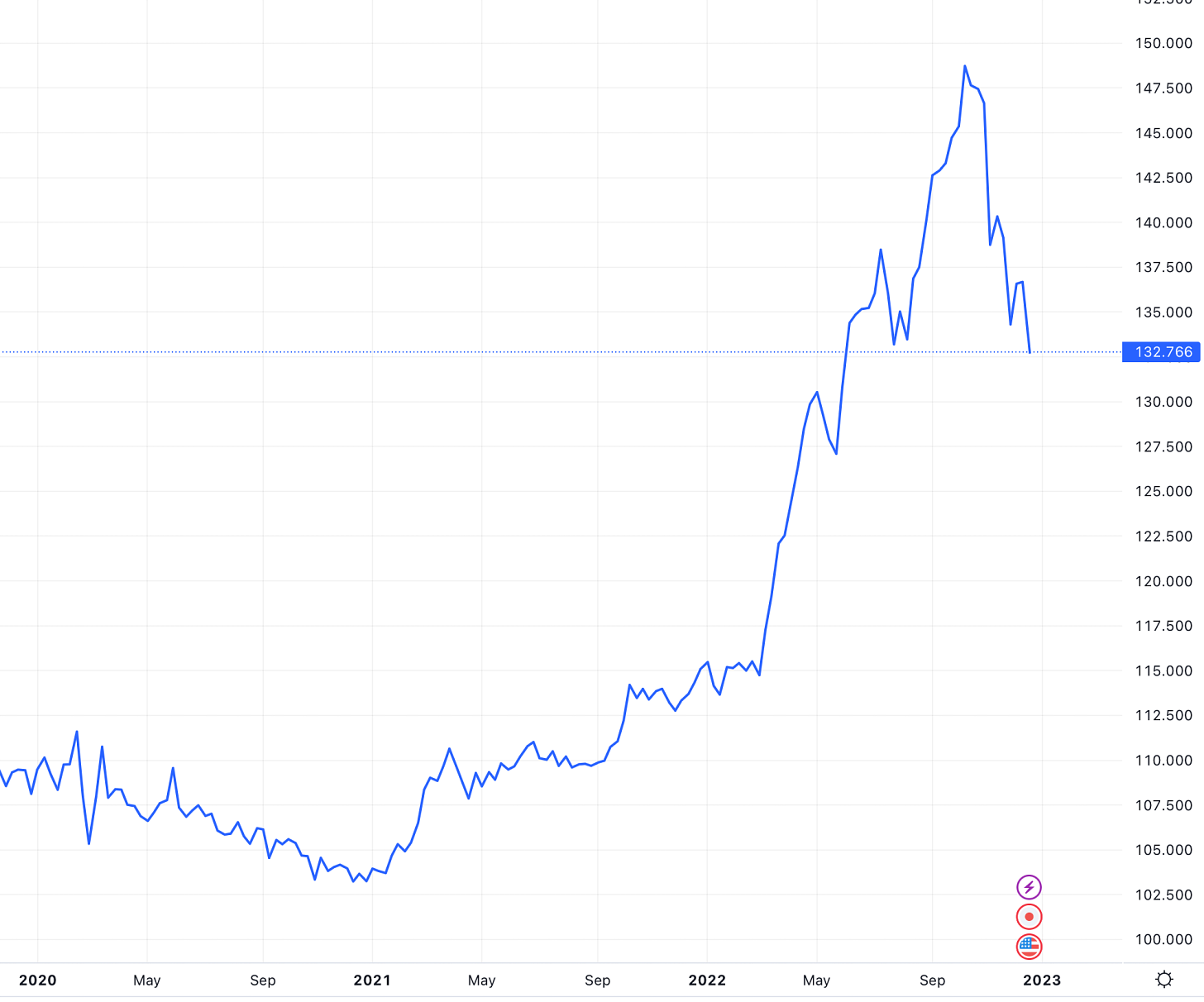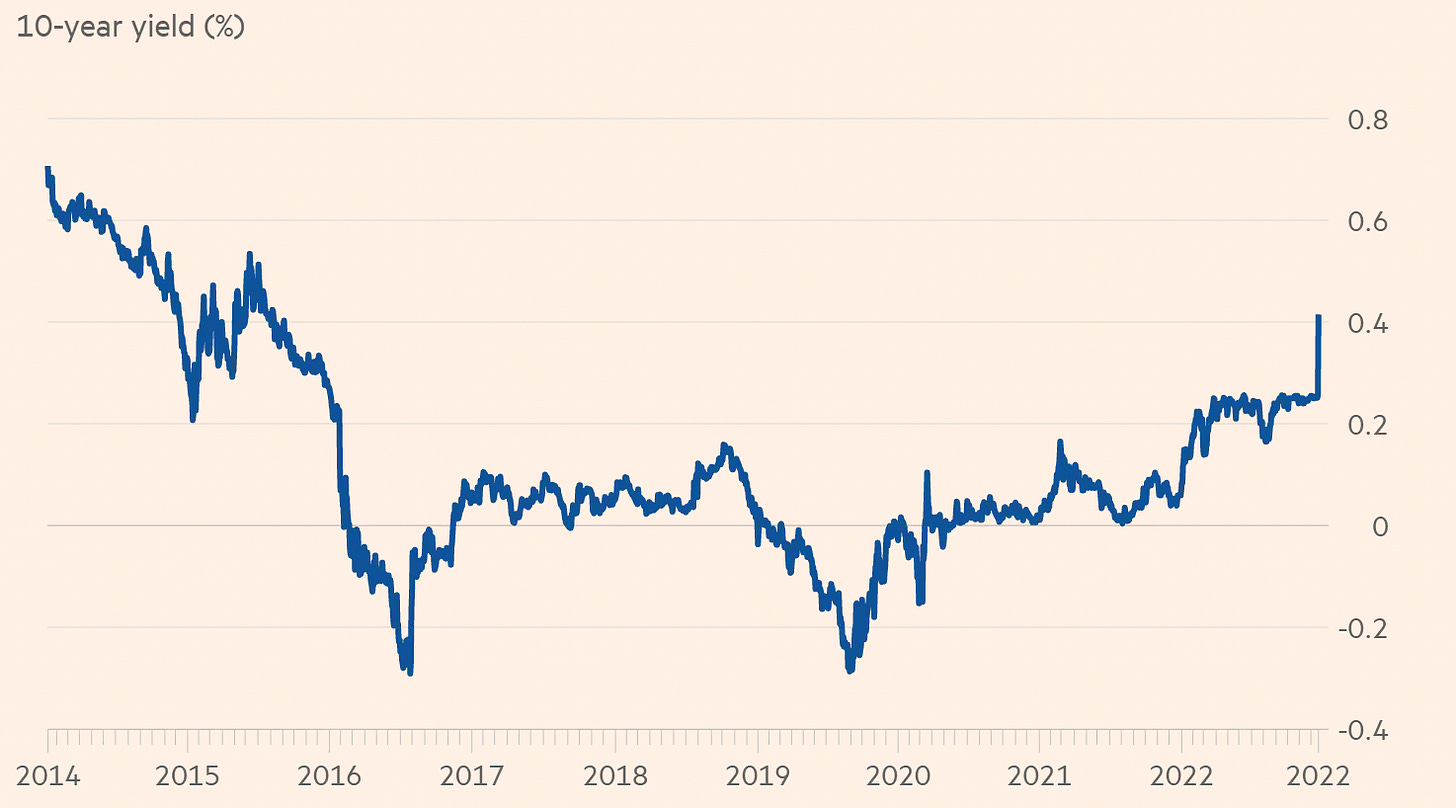BoJ's Yield Curve
Trade Strategy
The Bank of Japan's monetary policy has been a controversial one, sticking to its infamous zero-bound interest rates. With every other G7 Central Bank choosing to tighten their respective policies with unprecedented rate hikes, Japan's Central Bank remains the outlier with a target of 0% and a cap (up until recently) of 0.25% deviation from the target on its 10-Year JGB (Japanese Government Bond) yields.
Consequences of the Existing Monetary Policy
Japan has faced the consequences of this peculiar policy through its currency and its economic mandates. The JPY (Yen) lost almost a third of its value from the start of 2021 to October 2022. In addition its mandate to keep inflation at 2% has not been met, with headline inflation at 3.7% for October 2022. The temptation to increase its interest rates may be higher given the push and struggle remaining G7 countries have been enduring.
The JPY lost a significant amount of value due to the higher promise of interest rates for investors elsewhere, compared to Japanese bonds. The fall in demand for the Yen meant the currency depreciated against the USD, which faced strong demand particularly as a typical 'safe-haven' currency. This led to a significant surge in the USD/JPY pair.
The rapid appreciation of the Dollar and depreciation of the Yen led to the rise in the currency pair.
What's Changed Now?
On 20th December an announcement may have sounded the start of the BoJ's monetary tightening position.
The Bank stated it would let its 10-Year JGB yields fluctuate by 0.5% either direction around its 0% target. Effectively this is lifting the cap on yields from 0.25% to 0.5%.
While Governor Kuroda denied any claims of this being a shift in the monetary policy to a tightening one, nevertheless markets responded in a dramatic way to the historic and surprise decision. The target remains at 0%.
The initial and most obvious response was a rise in 10-Year yields:
The previous monetary policy led to severe liquidity shortages, as the BoJ's extended QE scheme led to amassed assets on its balance sheet. Japan is home to the second Central Bank which holds more assets on its balance sheet than its GDP, second to the Bank of Switzerland.
The loosening of the yield cap should allow for more liquidity in the market.
As seen on the USD/JPY graph above, the announcement led to a significant appreciation of the JPY, explaining the fall in the currency pair. This is due to increased liquidity for JGBs and so higher demand for Japanese Yen. At a time when the Dollar is depreciating rapidly, we see the downtrend of this currency pair exacerbated.
Further implications were seen in global bond markets, with both US Treasury yields and UK Gilt yields rising 0.11% to 3.69% and 3.6% respectively.
Impact on the Stock Market
Typically, the TOPIX (Tokyo Stock Price Index) is positively correlated with the USD/JPY pair. This means that as the pair rises, so do Japanese stocks.
The decision by the BoJ will lead to an appreciation of the Japanese Yen, as more investors demand the currency. This will mean a fall in the currency pair, and so a fall in Japanese stocks.
While the decision may allow for better liquidity management, and control over the mandate of the Japanese Central Bank, there are consequences on the stock market which are unfavourable for Japanese domestic investors.
What Can We Do With This?
The impact on inflation will translate into the economy with a lag, however we may expect the Bank of Japan to ease liquidity concerns by loosening the cap even further than a 0.5% adjustment. If we do believe this, we can invoke our short position on the USD/JPY pair again. This will be a good position to hold going into 2023 if we expect Governor Kuroda to push for a stronger approach to inflation.
Hedging exposure to the TOPIX could be done through futures. The TPDH3 futures are USD denominated futures on the TOPIX, and may be a better investment if we believe the Yen to appreciate.
This is because when a foreign currency appreciates relative to a domestic currency (Yen appreciates relative to the Dollar), then domestic-currency returns will be higher for foreign investments. Therefore an unhedged position on the TPDH3 futures will be a reasonable investment to take advantage of a falling USD/JPY pair.



